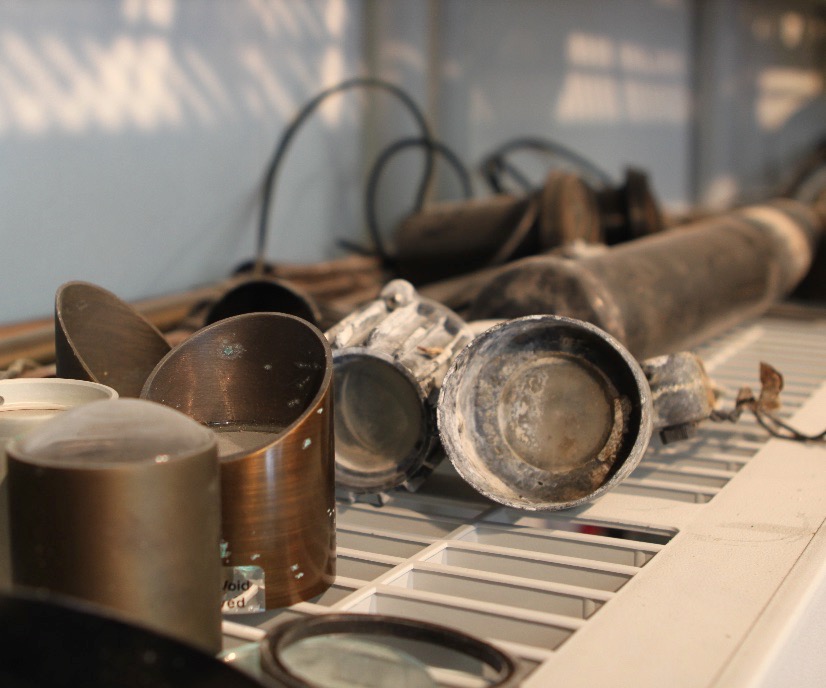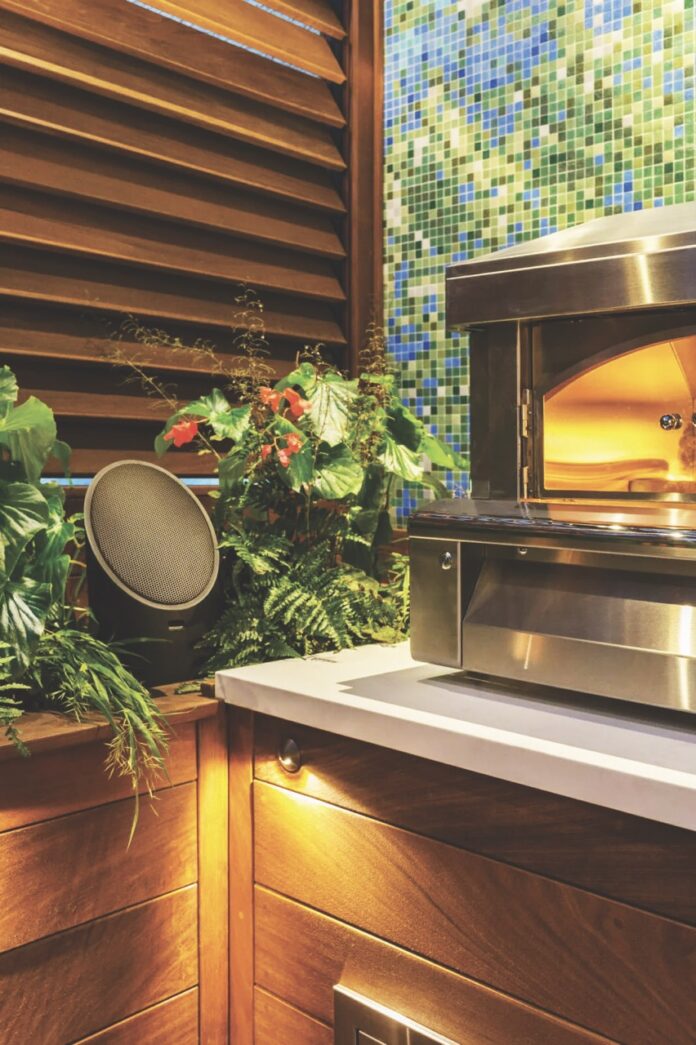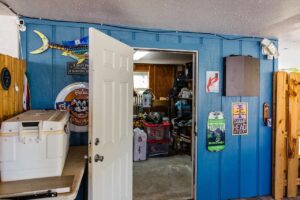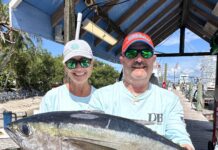Summer days in the Florida Keys are meant for the boat, but after a great day on the water, when it comes time to return home and grill the day’s catch or simply enjoy an evening with friends and family, outdoor enjoyment is a must – especially with hurricane-resistant buildings that don’t always feature much indoor space.
Perfect tunes are the ideal complement to these evenings, and thankfully, the Keys are blessed with a high-end authority on outdoor and whole-home sound. We recently sat down with Franco D’Ascanio Sr. and Jr. of Coastal Source, a company offering complete solutions to outdoor lighting and audio needs, to discuss the factors distinguishing a true, yard-filling outdoor sound system from an underwhelming Bluetooth speaker you plop on the table. As we learned, with the rise of more home technologies controlled by familiar user interfaces – our beloved phones – exceptional sound and lighting outside the home are more accessible for consumers than ever before.
CONSIDER THE SOURCE
A high-caliber system is nothing without a consistent connection to deliver the high-quality source material. With the rise of streaming services and wireless connectivity, this becomes even more crucial. Map out your system ahead of time, making sure that components can either be hard-wired with weatherproof connections and “direct burial” cables or are well within their listed wireless ranges. If you plan to control your system with your phone or a remote, be sure that your home’s wireless network extends to all areas where you’d need to control the system.

THE TEST OF TIME
With an abundance of heat, sunlight, humidity, salinity and wind, the Keys are a textbook example of a damaging environment for outdoor technology. Although many quality brands may command respect indoors, using a budget product or one that’s not rated for outdoor use may find you wasting more money as you replace ruined equipment within a year or two.
“There are other brands that we used before we had our own brand, and they’re huge brand names, but they just don’t last in our corrosive environment,” said Franco Jr.
To illustrate this point, the Weekly was invited to tour Coastal Source’s “salt lab.” As the name suggests, it’s where the company puts its products through hell on earth for electronics, throwing every damaging condition possible at them in order to test their resilience. While Franco Jr. said Coastal Source’s products are engineered to withstand the brutal test chambers, shelves on the salt lab’s walls were filled with comparison products that were barely recognizable after the same trials.

QUANTITY AND PLACEMENT, NOT VOLUME, DRIVE QUALITY
When it comes time to map out a system, focus on a larger quantity of full-range speakers to evenly spread the sound, rather than two smaller speakers and a subwoofer or a few massively powerful units. You’re looking for ambient space-filling music that still allows for conversational tones around the yard, not a DJ stand.
“The problem is, if you have a subwoofer and then a bunch of little speakers, as you walk away, if the main speakers don’t have any bass, it thins out,” said Franco Sr. As opposed to “point source” speakers, which create a hemisphere of sound that quickly dissipates with distance from the point of origin, he pointed to “line array” technologies that use a ribbon of speakers to create a directed cylinder of sound.
“With a point source speaker, a lot of that sound is going by you in every direction, rather than delivered to you,” he explained, cranking up the volume on one of Coastal Source’s flagship offerings. “What’s cool about these is that they play very loud, but they’re extremely even. As you walk towards the speakers, you’ll notice they don’t get a lot louder.”
“You want to have a volume level where you can hear in front of them,” added Franco Jr. “If you have two big speakers in a corner, you don’t want to go to that corner, because it’s so loud that you can’t hear people. You can take that same amount of money and spread it across multiple speakers to create zones and give so much more control.”
If you’re looking to fill a large space, consider speakers with a wide dispersion angle, added Franco Sr. The wider the angle, the easier it is to cover a larger area with fewer speakers and maintain high fidelity.
PLAN AHEAD
A budget ultimately drives most systems, but if you think you may want to expand in the future, go ahead and lay the low-cost groundwork ahead of time to avoid repeat disruptions of your yard and walls. While you may not buy all the speakers for your dream setup at once, “instead of running two pairs of wires, run four pairs, and just have them come up in some location,” Franco Jr. suggested, adding that an established central “trunk line” for wiring that can be tapped into from multiple locations makes modifications much easier down the road.
“Make sure if you dig up that planter bed or go under some pavers, you can put them down and you don’t have to go into them again.”


























